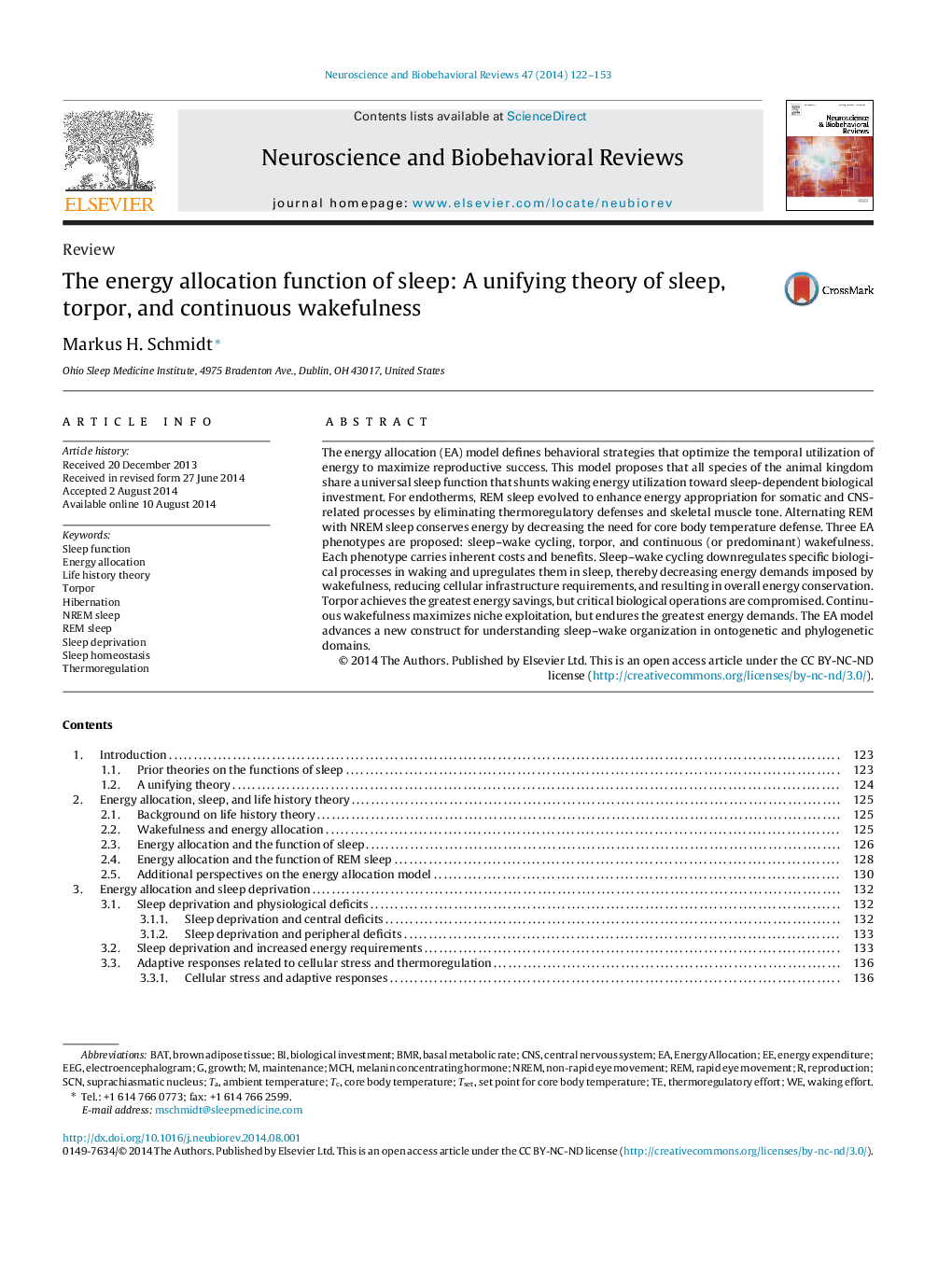| کد مقاله | کد نشریه | سال انتشار | مقاله انگلیسی | نسخه تمام متن |
|---|---|---|---|---|
| 7303721 | 1475323 | 2014 | 32 صفحه PDF | دانلود رایگان |
عنوان انگلیسی مقاله ISI
The energy allocation function of sleep: A unifying theory of sleep, torpor, and continuous wakefulness
ترجمه فارسی عنوان
تابع تخصیص انرژی خواب: یک تئوری متحد خواب، تند و بی تکلف پیوسته است
دانلود مقاله + سفارش ترجمه
دانلود مقاله ISI انگلیسی
رایگان برای ایرانیان
کلمات کلیدی
MCHBATBMRSCNNREMREMElectroencephalogram - الکتروانسفالوگرافیbrown adipose tissue - بافت چربی قهوه ایEnergy allocation - تخصیص انرژیReproduction - تولید مثل یا زادآوریrapid eye movement - حرکت سریع چشمnon-rapid eye movement - حرکت سریع چشم نیستCNS - دستگاه عصبی مرکزیcore body temperature - دمای بدن هستهAmbient temperature - دمای محیطGrowth - رشدcentral nervous system - سیستم عصبی مرکزیMaintenance - عملیات نگهداری و تعمیراتbasal metabolic rate - میزان متابولیسم پایهEEG - نوار مغزیEnergy expenditure - هزینه انرژیSuprachiasmatic nucleus - هستههای سوپراکیاسماتیکMelanin concentrating hormone - هورمون متمرکز کننده ملانین
موضوعات مرتبط
علوم زیستی و بیوفناوری
علم عصب شناسی
علوم اعصاب رفتاری
چکیده انگلیسی
The energy allocation (EA) model defines behavioral strategies that optimize the temporal utilization of energy to maximize reproductive success. This model proposes that all species of the animal kingdom share a universal sleep function that shunts waking energy utilization toward sleep-dependent biological investment. For endotherms, REM sleep evolved to enhance energy appropriation for somatic and CNS-related processes by eliminating thermoregulatory defenses and skeletal muscle tone. Alternating REM with NREM sleep conserves energy by decreasing the need for core body temperature defense. Three EA phenotypes are proposed: sleep-wake cycling, torpor, and continuous (or predominant) wakefulness. Each phenotype carries inherent costs and benefits. Sleep-wake cycling downregulates specific biological processes in waking and upregulates them in sleep, thereby decreasing energy demands imposed by wakefulness, reducing cellular infrastructure requirements, and resulting in overall energy conservation. Torpor achieves the greatest energy savings, but critical biological operations are compromised. Continuous wakefulness maximizes niche exploitation, but endures the greatest energy demands. The EA model advances a new construct for understanding sleep-wake organization in ontogenetic and phylogenetic domains.
ناشر
Database: Elsevier - ScienceDirect (ساینس دایرکت)
Journal: Neuroscience & Biobehavioral Reviews - Volume 47, November 2014, Pages 122-153
Journal: Neuroscience & Biobehavioral Reviews - Volume 47, November 2014, Pages 122-153
نویسندگان
Markus H. Schmidt,
